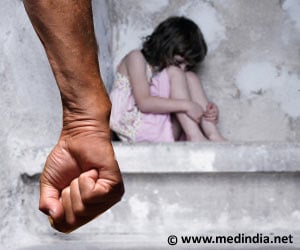This is the time for governments, donors, and institutions to come together not only to end the COVID-19 pandemic but also to protect future ones.

Economic inequality or poverty is a key determinant of health, affecting virtually every aspect of life. Children and adolescents who face early life poverty are at least twice as likely to experience detrimental health outcomes compared to children and adolescents at the top of the wealth spectrum. In addition, children and adolescents in low-income families are more likely to be born prematurely and at low birthweight than those in higher-income families. Their health problems persist through adolescence and into adulthood, even if they improve their financial situation later on in life.
‘The study was concluded that all countries need to prioritize children and adolescent health, and tailor health and multisectoral programs to meet their needs and risk factors.’





Advertisement
Looking for a Holistic Approach
The authors of the study on optimizing children and adolescents' health and development call on global leaders and policymakers to replace current approaches to child and adolescent health, which are often fragmented by age groups or specific health conditions, to offer comprehensive care that spans nutrition, preventive health, education, economic, and community support across age groups from preconception through age 20. This is needed due to the reality that young people have unique needs compared with adults but their needs are not currently being met comprehensively.The new collection of papers highlights how the COVID-19 pandemic has disrupted health and educational services as well economies and social systems, putting recent progress toward achieving the United Nations’ Sustainable Development Goals in jeopardy.
Probability of mortality in the first five years of life is a commonly used indicator of human capital and country progress. However, this indicator only provides a narrow view of child health and development.
In 2019, global mortality at all ages went down by one quarter from 1990. In 2019, 8.6 million deaths occurred globally. Of these deaths, 1.9 million (23%) were stillbirths and 2.4 million (28%) occurred in the first month of life. Among other causes of death, 2.75 million children died between the first month and fifth year of age; the greatest numbers were among one-to-four-year-olds (1.3 million) and five-to-nine-year-olds (0.86 million). Additionally, 506,000 (6%) deaths occurred in 5- to 9-year olds; 368,000 (4%) deaths occurred between 10 and 14 years; and 595,000 (1%) deaths occurred among 15- to 19-year-olds.
Advertisement
Strong Health and Social Systems Come to the Rescue
Preconception, pregnancy, and infant interventions that address children' and adolescents' survival and nutrition have a strong impact on weight, height, and development, and they serve as key indicators of future health, nutrition, education level, and intelligence quotients – if they are delivered at a high level of quality.However, these interventions must be scaled up and continued through early childhood and adolescence via school-based and community delivery platforms, where children and families can have consistent access to immunizations to address often neglected areas of child health.
Based on this analysis, it has been pointed out that to maximize children’s health, strong health systems need to partner with equally effective social systems such as schools, communities, families, and digital platforms that offer promotive, preventive, and curative services relevant to a child’s life stage.
It is also pointed out that the growing challenges older children and adolescents face were due to the COVID-19 pandemic, including the lack of social support and the mental health effects such as feelings of isolation, loneliness, and anxiety.
Advertisement
Overcoming Long-Term Effects
The analysis of data from 95 national surveys in low and middle income countries confirms that vast economic inequalities are there in both between and within countries, with strong connections between early-life poverty and health, nutrition, and cognitive development of children and adolescents.In this, children at the lowest end of the wealth spectrum had at least double the risk of detrimental health outcomes linked to an early life poverty, such as childhood mortality, stunting, development delays, teenage motherhood, and incomplete primary school compared to children at the top of the wealth spectrum. Furthermore, the magnitude of inequality in child mortality, nutrition, and development was highly associated with the degree of economic inequality.
Differences were observed in intelligence quotients examined between children and adolescents at the top of the wealth scale compared to children at the bottom of the scale. These disparities were also observed in children younger than five years of age, indicating that while overall differences in access to school likely played a role in cognition scores, environmental factors linked to poverty from early childhood have a large impact starting in gestation and continuing throughout childhood and adolescence.
Migration, displacement, and disrupted schooling are emerging as significant challenges for children and adolescents. Children with severely ill family members are at increased nutritional risk, while school absenteeism has been linked with depression, behavioral problems, and poor educational outcomes. In addition, sustained fear of COVID-19 pandemic spread can result in higher levels of stress that are associated with poorer mental health outcomes among children and adolescents.
The study was concluded that all countries need to prioritize children and adolescent health, and tailor health and multisectoral programs to meet their needs and risk factors. This is the time for governments, donors, and institutions to come together not only to end the pandemic but also to protect future ones.
Source-Medindia






